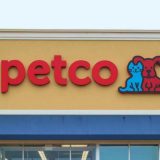- Talent Pool Management: Safe Investment
- The Evolution Of Talent Pool Management: Employer Branding
- Traditional way: Business centered
- Modern strategies: Employer Branding
- What Makes A Strong Employer Brand?
- Define Your EVP
- Cultivate A Positive Company Reputation
- Showcase Employee Testimonials
- Engage In Social Responsibility Initiatives
- Employee Stock: Options Vs. Shares
- What’s An Option?
- What’s A Share?
- Examples: Modern Talent Pool Strategies Put To Work
- Heineken
- Starbucks
- General Electric
The Evolution Of Talent Pool Management: Modern Strategies For Attracting Top Talent

If you could go back in time to the days of your business’s beginnings, would you change anything?
Maybe you would’ve had more courage to say no when you said yes.
Or you would’ve invested your assets differently.
Maybe you’d discover a way to hire talented and qualified people sooner to speed up business growth.
I‘m sure you would have done some things differently.
I know I would have.
However, because time travel is not yet a reality, we have to stick to the present and value every moment as an opportunity for change.
Creating the company of the future means implementing talent pool management and adapting it to new generations of potential employees.
As you’ve seen by now, your business’s success primarily depends on the people who conduct it.
By building a strong reputation for the company, or, to say it more professionally, building an employer’s brand, you can make it more interesting to the vast number of talented people out there.
To avoid mistakes from the past and to be completely up-to-date, read on to refresh your knowledge on how to improve your talent pool management.
Talent Pool Management: Safe Investment
Getting the right people at the right time in the right place—that would be the simplest definition of success.
It sounds pretty simple, but is it?
Everyone who has ever managed more than two employees will tell you that it’s the hardest thing to accomplish.
Wouldn’t it be easier if you could attract people with the most outstanding qualifications for the job to work for your company?
It will take some effort to build your employer brand, but the results are inevitable.
Whether it is promoted or not, every company has a reputation.
Promoting a business or company as a desirable employer for a specific target group is the very principle behind employer branding.
The goal of this procedure is to create a business identity that stimulates and retains current employees while attracting new ones.
Your employees should resist the temptation to accept the first better offer that comes up.
That’s why it’s necessary to offer more than simply an office and a paycheck.
The principles that your company upholds, the battles it engages in, and the treatment it provides to current, former, and prospective employees all mean a great deal.
To make all this start working, you’ll need a good employer branding strategy.
Here are two major strategies you can use that are adjusted to the modern world and brand-new generations of talented workers:
The Evolution Of Talent Pool Management: Employer Branding
The very term “employer brand” was coined back in the late 20th century, and it was a new, innovative strategy to make companies more attractive to employees.
Since then, a lot has changed. The world has become a global village due to the expansion of digitalization. Everything is one click away.
The roles changed sides—it was all about the companies in the past, and it’s all about the workforce nowadays.
Like in marketing, every strategy becomes client-oriented.
Talent pool management strategies are no exception.
Traditional way: Business centered
Until recently, job ads and salary packages were the main perks for attracting candidates. Branding was focused on promoting the company through the product itself.
The best that was done was branding a logo or a company name.
Not a sound on company culture, values, or any employee commodity.
You could’ve heard of the company through commercials or other channels; you could’ve read their job ad, and from there, you should decide whether to apply or not.
Sort of like playing Russian roulette.
It was hard for the employers too, not being able to reach the specific talents they needed and wasting time and money on endless hiring processes.
Modern strategies: Employer Branding
Luckily for companies and employees, with the expansion of social networks and digitalization in general, everything has changed for employer branding and talent pool management.
People became more aware of the bigger picture. It’s not enough to just work and receive a paycheck.
New generations are now expecting a lot more from their careers.
They want to make an impact and be part of something relevant.
The new age has brought us value-driven talents.
It’s no longer all about the company; the employees are in the spotlight now, and the question is: what can the company do for them and what are its values
It’s time to start thinking about your potential workers as customers—what are you offering, and do they want it?
Try implementing marketing strategies and customizing them for your business.
With these methods, you can upgrade your employer’s brand and attract more top talent into your talent pool.
What Makes A Strong Employer Brand?
To successfully build a strong and positive employer brand, you should follow some of these steps:
Define Your EVP
If you want to put your business out there and show potential employees what to expect if they work for you, define your EVP, or Employee Value Proposition.
What is EVP?
It’s a set of all the benefits and values you’re offering to employees in return for their talent and excellent work.
It can include generous leave allowances, great work-life balance, paid education, parental leave, flexible working hours, and so on.
A meaningful EVP attracts job prospects and top talent to your company and ensures that your employees stay.
It differentiates you from the competition and demonstrates that you value your staff members.
Cultivate A Positive Company Reputation
Use your presence on the web and social networks to point out the company’s values and culture.
State your opinion about important and relevant issues that are happening now. That way, people can get to know your business better and connect.
Employer brand is your way to advertise your business, but it has to be shown in action to prove you’re authentic.
Showcase Employee Testimonials
The best way to show your authenticity is through your current employees. Word of mouth is the oldest, but still most effective, method of advertising.
Share employee testimonials wherever you can.
It can have the biggest impact on people reading your job ad and researching your company.
Engage In Social Responsibility Initiatives
Get socially responsible!
Build your CSR. Another acronym, meaning Corporate Social Responsibility.
Corporate social responsibility (CSR) is a business strategy that aims to increase profits while also actively and positively contributing to society.
It includes all of the notions of community engagement, sustainability, environmental actions, and all other notions that a company can use to do good in the world and make a difference in improving the social order.
Employee Stock: Options Vs. Shares
An important instrument in a startup’s strategy to attract employees and create a positive employee brand is an option pool, also known as an ESOP (Employee Share Option Pool).
A well-crafted startup option plan plays a major role in this strategy.
And it’s a big issue when you’re just starting your business.
It also makes sure that people who contribute are given proper credit for their contributions.
If you’re wondering what the ratio of options vs. shares for employee stock is, let’s look at them a little closer and decide.
What’s An Option?
A contract known as an option grants the holder the right to purchase a certain number of shares at a given price on or before a certain date.
Grants of options are made with the assumption that the value of a share will increase as the company expands so that employees will potentially earn money if they sell shares.
What’s A Share?
Shares are the smallest part of the company, and you can buy them as a way to invest in the business.
Owning a share means you’re entitled to a certain percentage of the company’s profit.
You can own a few shares, up to as many as are allowed.
Often, companies limit the number of shares that can be bought.
As you can see, options and shares differ greatly from one another.
One significant distinction is that shares indicate a fraction of the company’s ownership.
This has no time limit, and the firm’s shareholder is not obligated to make any additional payments.
On the other hand, options simply let you choose between selling or buying shares in the future.
It’s only a contract that grants you certain rights; you don’t own anything.
Options will always have a deadline to be exercised.
It’s up to you what you’ll use to attract or keep your employees.
Usually, it’s to offer options when you’re starting a business and shares as a reward for the best workers in the company.
Examples: Modern Talent Pool Strategies Put To Work
If you need some inspiration and proof of how you can make your business a leader in your niche with the use of talent pool management, check out these few stories of companies you’ve probably heard of:
Heineken
One of the brightest examples of successful talent pool management is Heineken.
To maintain their international reputation, they must constantly work on their employer’s brand.
Heineken was among the first to become aware of this kind of strategic approach to building and maintaining a good reputation. In 2016, they released their “Go Places” campaign, which was updated in 2019.
It was a series of videos where Heineken employees told their stories about working in different positions and places around the world.
According to Marketing Week, applications to Heineken went up by 56% after the first campaign.
Starbucks
Another international company that’s mostly known for its employer’s brand is Starbucks.
One thing that Starbucks has done perfectly is make very good use of social networks.
They understood the importance of doing it on time and also that the majority of their potential top talents are members of new generations, such as Millenials and Gen Z.
Starbucks launched Instagram and Twitter pages, particularly for job seekers, where they express gratitude to current employees and communicate with potential new hires.
They’ve also featured a hashtag (#sbuxjobschat) where potential employees can interact.
This made their talent pool options hit the roof, and hiring is no longer a worry for them.
General Electric
Employers like General Electric started using their staff as brand ambassadors and putting their accomplishments in the spotlight.
They needed to exit the status of a baby boomer company since they’re one of the oldest electric companies in the US.
So they focused on social networks to digitalize and to tell their story through the mouths of employees.
If you want to read more about their employer branding strategy, you can check it out here. Even though it may seem like another expense on your account, employer branding can get you much more than you’ve invested.
If not yet, you need to seriously reconsider putting it to work and wait for the magic to happen.
Additional:













